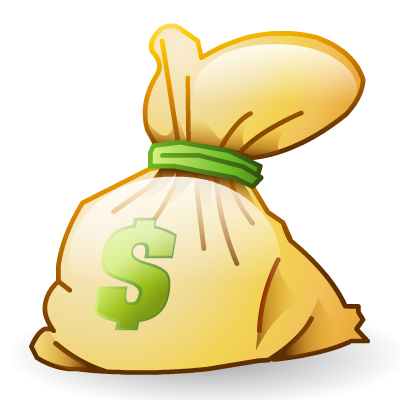Easy Ways to Monetize Your Blog or Website
The Internet has provided additional opportunities to build or expand a business online. Further, it has created many new methods by which money can be made through an online business, whether you’re blogging about gardening, promoting your freelance business or selling your homemade wares, you can add additional income options to your online presence. These monetization methods are free and easy to implement. Contextual Advertising; Contextual advertising are ads fed to your website or blog based on the content on your site. If your website or blog is about gardening, the ads fed to your site will be about gardening, as well. You are paid a small fee each time a visitor to your site clicks on one of the ads.
Once you sign up, running ads involves creating the ad you want including type (i.e. text, graphic or video), size and color, and then copying and pasting the code onto your website or blog’s text (HTML) editor where you want the ad to appear. While some programs allow you to join and start running ads right away, others will want to know more about your site, such as the number of unique visitors you have a month before approving you. When you join an ad feed program, read the terms of service carefully to avoid violating any rules. Google in particular isn’t very forgiving if you mess up. Most rules state that you can’t click on the links on your site or ask your visitors to click on your links.
Here a few of contextual ad programs you can check out:
Affiliate Programs;
The advantage to affiliate programs versus contextual advertising is that you have more control over the offers your readers see. Affiliate marketing is basically referral marketing. For example, if you want to recommend a book to your site visitors, you can join Amazon’s Associate’s Program, get a coded link to the book and post it on your site. If a visitor buys the book through your link, you get a commission.
Affiliate programs pay in a variety of ways including percentage of the sale, flat rate, or per action (i.e. a lead). You can sign up for affiliate programs through networks, such as Conversant (formally Commission Junction) or find programs through affiliate directories. Many websites run their own affiliate programs, as well.
Similar to contextual advertising, some affiliate programs allow you to sign up and start promoting products right away, while others will want to check out your site first. You’ll also want to read the terms of service as many affiliate programs have restrictions on how you can use and run the ads. For example, some don’t want you to email affiliate links.
Running ads requires choosing an ad option provided by the affiliate vendor, and then copying and pasting the ad code into the text editor (HTML) of your site where you want the ad to run.
Affiliate programs are everywhere, but here are a few places you can get started:
Conversant (formally Commission Junction)
Sell Ad Space Directly; While you can post a contextual ad or affiliate product offers into ad spots on your website and hope a visitor will click or buy, you can also sell the space directly to advertisers. This method works best if you have traffic to show an advertiser his ad will get seen. To sell ad space, you need to decide what spots are available, such as the header, sidebars or part of the content. Create an advertising page that gives your site statistics, ad spots and prices. Advertisers can pay through PayPal for easy payment processing.Another option to selling ads is to sell content space through sponsored posts. In a sponsored post, you write or the sponsor writes an article and pays you to run it. This method has some drawbacks in that readers sometimes feel paid content compromises the credibility of the website. Further, Google doesn’t like paid posts and might penalize you for running it.
Sell Your Own Products; You can get paid a percentage of the sale from affiliate marketing, but you earn 100 percent of the sale from products you create and sell on your site. Creating your own products is the natural progression for bloggers, who end up with lots of content on their site that they can then gather and edit into an ebook. But bloggers aren’t the only ones who can create products. A freelance writer, selling his services through a website, can also create an ebook to teach others how to freelance write.
Ebooks aren’t the only option for creating products. You can develop courses, videos, and software as well. If you don’t want to create the content yourself, you can purchase private label rights (PLR) and repurpose it to fit your style. Easier still, you can buy master resale rights (MRR) to products and sell it as-is (terms of use usually prevent you from changing MRR material).
The important thing to remember when monetizing your website or blog is that the offers need to match the topic of your site. You don’t want to sell automotive parts if your site is about gardening. Further, you want to make sure the products and services being promoted on your site are of good quality. Your reputation and credibility will take a hit if you subject your readers to sub quality services.
Posted by vCash http://www.Vickispotvcashadelaide.com.au




Need To Increase Your ClickBank Banner Commissions And Traffic?
ReplyDeleteBannerizer made it easy for you to promote ClickBank products by banners, simply go to Bannerizer, and get the banner codes for your selected ClickBank products or use the Universal ClickBank Banner Rotator to promote all of the ClickBank products.